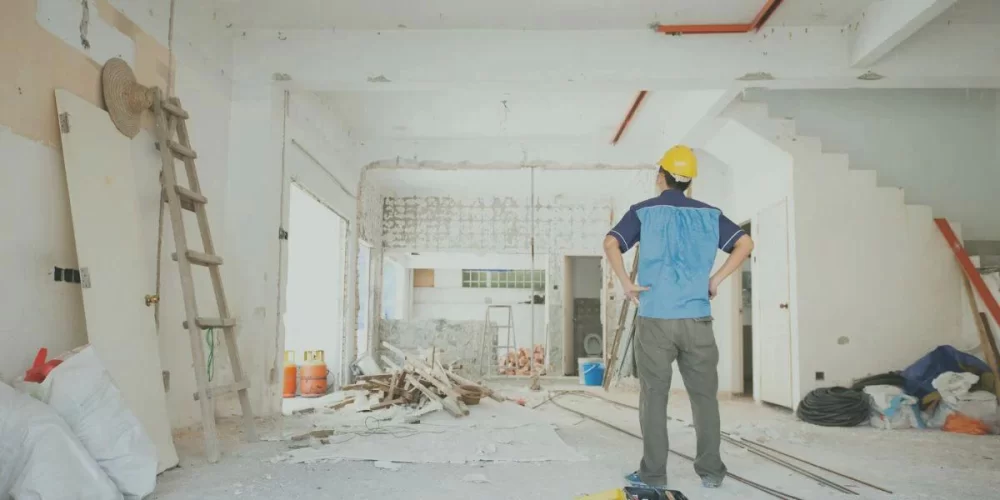
Mastering Your Home Renovation Project: A Step-by-Step Guide
As a homeowner, one of the most exciting yet challenging endeavors is planning a home renovation project. Whether you want to refresh your kitchen, revamp your bathroom, or completely overhaul your living space, a well-thought-out plan is essential to ensure the project runs smoothly. But where do you start? What steps should you take to avoid common pitfalls? As someone who's been through several home renovation projects, I can share some invaluable tips to guide you along the way.
The First Step: Defining Your Vision and Setting a Budget
Before you even pick up a hammer or call a contractor, it’s crucial to define your vision. What do you want to achieve with this renovation? Are you aiming to increase the value of your home for resale, or are you just looking to improve your living space for personal enjoyment? Take the time to think through every aspect of the project. Consider your lifestyle, needs, and the way your home should function.
Once you have a vision, the next step is setting a budget. This is where many homeowners make mistakes—either underestimating or overestimating the cost of their renovation. During my first renovation, I didn’t account for unexpected costs, which led to financial strain. It's essential to allocate a budget that includes both the expected costs and a contingency fund (typically 10-20%) for unforeseen expenses. This will give you a buffer for surprises along the way, like the discovery of plumbing issues or foundation problems.
Step 2: Researching and Hiring the Right Professionals
Renovating your home is a significant investment, so it’s important to hire the right professionals. When I renovated my kitchen, I made the mistake of hiring a contractor based on price alone. While it seemed like a good deal initially, the project took longer than expected, and there were many mistakes that required corrections later. The takeaway from this experience is that hiring a skilled and experienced professional is worth the investment.
Start by researching reputable contractors in your area. Look for licensed and insured professionals with positive reviews and a portfolio of previous work. Ask for recommendations from friends, family, or neighbors who have completed similar projects. Don’t rush the hiring process—take your time to interview multiple candidates and get written estimates before making a decision.
Step 3: Creating a Detailed Renovation Plan
Once you’ve set your budget and selected your professionals, it’s time to put pen to paper and create a detailed renovation plan. This step is crucial to ensure that everyone is on the same page and that the project stays on track. You’ll need to map out the specifics of your renovation, including the materials you want to use, the timeline for completion, and any permits that may be required.
For example, during my bathroom renovation, we had to apply for specific permits to ensure the project complied with local building codes. These permits delayed the project by a few weeks, but they were necessary to avoid costly fines in the future. Working with your contractor, architect, or designer to create a detailed plan can help prevent unexpected delays and ensure that the work progresses smoothly.
Step 4: Managing the Renovation Process
Even with a well-planned project, things can go wrong along the way. Whether it's dealing with delayed shipments of materials or a contractor falling behind schedule, staying on top of the process is key to ensuring a successful renovation. I learned this lesson the hard way during my living room remodel when a miscommunication led to a delay in the delivery of custom furniture. To avoid such setbacks, keep regular communication with your contractor and monitor the progress of the renovation closely. Hold weekly meetings to address any issues and to make adjustments to the plan as needed.
Step 5: Dealing with Unexpected Challenges
Throughout the renovation process, you may face unexpected challenges. It could be a structural issue, a hidden mold problem, or a change in building codes that requires adjustments to your plan. The key here is to remain flexible and work closely with your contractor to find solutions.
During my kitchen renovation, we encountered a plumbing issue that required tearing down part of the wall. While it was frustrating, addressing the problem early saved us from future headaches. It's also important to remember that every renovation will have its surprises, and patience is essential. Having a contingency plan in place for emergencies, both financial and logistical, will help you stay on track.
Step 6: Finalizing the Project and Enjoying Your New Space
Once the renovation is complete, it’s time to enjoy the fruits of your labor. But before you start celebrating, take the time to do a thorough walkthrough of your home. Check that everything has been completed according to your specifications and ensure that the contractor has cleaned up the area. Don't be afraid to ask for corrections if something isn’t right.
Afterward, it’s time to move in and enjoy your new space! Whether it's hosting a family dinner in your updated kitchen or relaxing in your newly renovated bathroom, the experience of seeing your vision come to life is one of the most rewarding aspects of home renovation.
Conclusion: The Key to a Successful Home Renovation
Planning a home renovation project may seem overwhelming at first, but with the right approach, you can achieve great results. It all comes down to careful planning, budgeting, and hiring the right professionals. Don’t be afraid to ask questions, do your research, and stay involved throughout the process. By following these steps, you’ll be well on your way to creating the home of your dreams.








